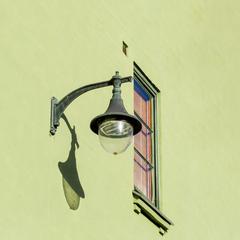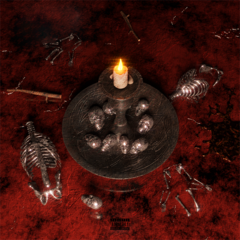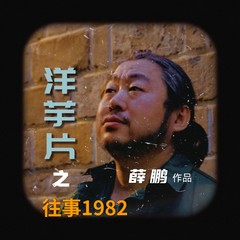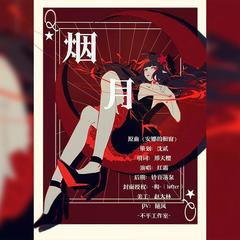Julie Andrews
朱丽·安德鲁斯,美国电影女演员,生于英国的萨里。原名朱莉娅·伊丽莎白·韦尔斯。父母都是艺人,她从小就开始演戏,十二岁在伦敦初次登台。1954年在纽约演出《男朋友》,两年后担任百老汇卖座剧《窈窕淑女》的女主角伊莱莎,连演三年,1960年又主演了另一部舞台剧《英雄肝胆美人心》。1964年,华纳兄弟影片公司把《窈窕淑女》搬上银幕,但公司老板杰克·华纳担心她演出失败并未聘她担任影片主角,而选中了奥德里·赫伯恩。同年,沃尔特·迪斯尼影片公司请她拍摄《玛丽·波平斯》(即《欢乐人间》),这部影片使安德鲁斯一跃斋 成为大明星,她获得这年奥斯卡最佳女主角金像奖和好莱坞外国新闻记者协会授予的最佳音乐喜剧片女主角金球奖,同时影片亦十分卖座。1965年,她主演的《音乐之声》获得最佳影片等六项奥斯卡大奖,她再次获得最佳音乐喜剧片女演员金球奖。这部影片也成为美国电影史上最卖座的影片之一。1982年,安德鲁斯又以《雌雄莫辨》获得奥斯卡最佳女主角金像奖提名。从1965年到1968年,她连续四届名列最卖座的十大明星之一,1966年和1967年两届都是冠军。七十年代她主演的大部分影片,如《亲爱的莉莉》等,都由她丈夫布莱克·爱德华兹导演,也让很多人羡慕。进入上世纪90年代,她的喉咙便出现异样,直到1997年开刀割除肿瘤后,朱丽·安德鲁斯暂时告别了演唱事业。然而,由此而引发的医疗官司以及从此无法歌唱的噩耗都没能真正影响安德鲁斯继续她的演艺生涯。事实上,这位多部畅销儿童读物的作者,联合国妇女开发基金会的“亲善大使”从来都不曾离开她热爱的事业和热爱她的观众们。 2001年,安德鲁斯在影片《公主日记》中再次出现,并在其后的《公主日记2:皇室婚约》中再展歌喉,为影片完整演唱了片中插曲“Your Crowning Glory”。之后她又成了《怪物史莱克》中菲欧娜公主的母亲。by William RuhlmannAt the commercial height of her career in the '60s, actress/singer Julie Andrews could claim to be the primary performer associated with the longest-running musical in Broadway history, the highest-grossing Hollywood film ever made, and the biggest-selling album of all time. Each of those achievements was surpassed by others eventually, of course, but Andrews, while experiencing the ups and downs that are the lot of any popular entertainment figure, retained her status as a theater and film legend, and even enhanced her reputation as she became a senior citizen early in the 21st century. By then, her professional career stretched back more than 50 years and included stage work, recordings, radio, television, films, and children's literature. By 2005, she had added stage director to her list of accomplishments.For most of her career, Andrews was blessed and burdened with an established persona. Her massive successes in the film musicals Mary Poppins (in which she played a magical nanny to two pre-World War I British children) and The Sound of Music (in which she played an aspiring nun-turned-governess to seven pre-World War II Austrian children) coalesced in the public mind into the character of a sweet-voiced, proper Englishwoman quickly ready to soothe childish traumas by crooning about "A Spoonful of Sugar" or "My Favorite Things." After those performances, she spent decades alternately conforming to and rebelling against the image they had given her. This struggle was played out against the background of the socially and politically tumultuous era of the late '60s and '70s, during which Andrews, who had conquered the entertainment world only a few years before, became virtually persona non grata, at least as far as the Hollywood film establishment was concerned. She persevered with the same determination that had brought her from a childhood in English vaudeville to Broadway stardom in only a few short years and that had sustained her. By the '80s, she was back to making films regularly; by the '90s she was back on Broadway; and by the 2000s her movie appearances were again coming in some of the highest-grossing pictures of the day. Throughout, she made regular, if infrequent recording sessions that eventually added up to a considerable body of audio work including both solo albums and soundtrack discs. Although her exquisite four-and-a-half-octave voice was injured in a 1997 throat operation, she eventually made at least a partial recovery to the point of singing professionally again by 2004.Julie Andrews was born Julia Elizabeth Wells in Walton-on-Thames, Surrey, England, on October 1, 1935. She was the daughter of Edward C. Wells, a teacher of woodworking and metal-crafting, and Barbara (Morris) Wells, a pianist and piano teacher. When she was four years old her parents divorced, and she went to live with her mother, who married Ted Andrews, a vaudeville entertainer. Her mother and stepfather performed together, and Andrews, who soon revealed an excellent singing voice, began participating in the family act, using the name Julie Andrews. She started taking singing lessons at the age of seven. She also studied acting and ballet at the Cone-Ripman School in London. In 1946, she made her radio debut with her mother and stepfather on the BBC program Monday Night at Eight, and on December 5 of that year the family appeared at a royal command performance at the Stage Door Canteen in London for Princess (later Queen) Elizabeth and Princess Margaret. Andrews gradually became the star attraction in the act, and the following year was cast in her first legitimate stage show, singing the "Polonaise" aria ("Je Suis Titania") from Ambroise Thomas' 1866 opera Mignon in the revue Starlight Roof at the London Hippodrome starting on October 23, 1947, shortly after her 12th birthday. She made her recording debut on the double-78 EP cast recording of the show, made for the English Columbia label. As the child labor law required, she appeared in the revue for only one year, then went back to touring the country with her parents. On November 1, 1948, she became the youngest performer ever chosen to appear in the Royal Command Variety Performance at the London Palladium. The same year, she released her first single under her own name when English Columbia issued the 78 "Je Veux Vivre"/"Come to the Fair," on which she sang with her stepfather to a piano accompaniment by her mother. During the Christmas season, she began a year-long run in the London Casino's pantomime show, Humpty Dumpty. She made her television debut on the BBC program Radiolympia Showtime on October 8, 1949.Andrews continued to take major roles in children's shows over the next several years: Little Red Riding Hood (1950), Aladdin (1951), Jack and the Beanstalk (1952), and Cinderella (1953). Meanwhile, she had a continuing role on the BBC radio series Educating Archie starting in 1950, and in 1952 hers was one of the dubbed-in English-language voices heard in a version of the 1949 animated Italian movie The Rose of Baghdad, her screen debut. In 1954, she appeared in a play, Mountain Fire, her debut as a dramatic stage actress. That summer, she was cast in the leading role in a British musical, The Boy Friend, for its Broadway production. She arrived in the U.S. for the first time in August 1954 and opened in the show on September 30, the day before her 19th birthday. Both the show's notices and hers were good, and The Boy Friend ran for 483 performances. RCA Victor Records recorded the original Broadway cast album, marking her U.S. record debut.After leaving The Boy Friend, Andrews was cast opposite Bing Crosby in a musical adaptation of Maxwell Anderson's play High Tor for television, with songs by Anderson and composer Arthur Schwartz. Sometimes referred to as the first made-for-TV movie, the production was shot in Hollywood in November 1955 and broadcast as an episode of Ford Star Jubilee on CBS on March 10, 1956, Andrews' American television debut. A soundtrack album was recorded and released by Decca Records. At the start of 1956, Andrews began rehearsals for My Fair Lady, a musical based on George Bernard Shaw's play Pygmalion, with songs by Alan Jay Lerner and Frederick Loewe, playing the title character, a London flower girl who is passed off as an upper-class woman by an elocutionist played by Rex Harrison. Andrews, then 20 years old, opened in the show on March 15, 1956, and it went on to become the longest-running Broadway musical up to its time, continuing for 2,717 performances. Andrews, who earned a Tony Award nomination for her performance, naturally appeared on the cast album recorded and released by the American Columbia Records label, which hit number one in the Billboard chart and in 1986 was certified for sales of three million copies in the U.S. (Worldwide sales by 1966 were estimated at six million copies.) Among the songs Andrews introduced were the standards "Wouldn't It Be Loverly" and "I Could Have Danced All Night."While still appearing in My Fair Lady, Andrews starred in a musical adaptation of Cinderella for television with songs by Richard Rodgers and Oscar Hammerstein II that was broadcast live on CBS on March 31, 1957. She earned an Emmy Award nomination for her performance, and Columbia issued a cast album that reached the Top 20. Her increasing prominence led to other opportunities to record, and she paired with Martyn Green, a star of Gilbert & Sullivan operettas, for Tell It Again, a children's recording issued by Angel Records. She then signed with RCA Victor and cut her debut solo album, The Lass with the Delicate Air, a collection of British folk songs, released in January 1958, and followed it with an LP of standards, Julie Andrews Sings, and a studio-cast recording of the operetta Rose-Marie with opera singer Giorgio Tozzi later that same year. Meanwhile, she, Harrison, and other members of the original Broadway cast of My Fair Lady went to London and opened the West End production of the musical on April 30, 1958. It was nearly as successful in England as it had been in the U.S., running 2,281 performances. On February 1, 1959, Andrews and the cast re-recorded the score in stereo for the original London cast album, which Columbia released. Andrews married set designer Tony Walton on May 10, 1959. She gave her final performance of My Fair Lady on August 8, 1959.Freed from stage work for the first time in years, Andrews hosted four episodes of The Julie Andrews Show for BBC television in November 1959 and made appearances on American television in 1960 before going into rehearsals for another Lerner and Loewe musical, Camelot, based on the Arthurian legend. The show opened on Broadway on December 3, 1960, and ran 873 performances. Columbia released the cast album, which topped the charts and went gold. Andrews, again nominated for a Tony Award, was contracted to stay with the show for a year and a half. During that time, she again found time for moonlighting activities. She signed a new recording contract with Columbia and in June 1961 cut her third solo album, Broadway's Fair Julie, an LP of show tunes released in December. On March 5, 1962, she and her friend, television star Carol Burnett, appeared together in concert for the Emmy Award-winning television special Julie and Carol at Carnegie Hall, which was broadcast in June, with a charting LP version released simultaneously by Columbia. Andrews, by then pregnant, left Camelot and restricted her activities for the rest of the year, though she did cut a fourth solo album, Don't Go in the Lion's Cage Tonight, containing some of her favorite British music hall songs. On November 27, 1962, she gave birth to Emma Kate Walton.Warner Bros. Pictures had purchased the screen rights to My Fair Lady, but the studio passed over Andrews, who had no movie experience, in favor of Audrey Hepburn, whose vocals were dubbed by veteran Hollywood ghost singer Marni Nixon. Instead, Walt Disney cast Andrews in the title role of his musical screen adaptation of the children's stories of P.L. Travers, Mary Poppins. She shot the film during 1963, and even before it was released was cast in two subsequent films, the non-musical The Americanization of Emily (October 1964), which she began working on immediately after completing Mary Poppins, and the screen version of the 1959 Rodgers & Hammerstein musical The Sound of Music, which began shooting in the spring of 1964. Mary Poppins, Andrews' onscreen film debut, opened in September 1964 to general acclaim, immediately establishing her as a movie star. At $45 million, it became the highest-grossing movie released that year. Although only certified gold in the U.S., the soundtrack album, featuring such Andrews performances as "A Spoonful of Sugar" and the singles chart entry "Super-cali-fragil-istic-expi-ali-docious," hit number one and reportedly had sold over six million copies worldwide by 1968. (The LP also won the 1964 Grammy Award for Best Recording for Children.) Andrews won the Academy Award for best actress for the film.The Sound of Music, which followed in March 1965, was even more successful. Grossing nearly $80 million domestically, it became the first film to beat 1939's Gone with the Wind as the biggest moneymaker in movie history, a ranking it held until the appearance of The Godfather in 1972. Again certified only as a gold record, the RCA Victor soundtrack album was estimated to have sold 15 million copies worldwide by 1976. (In 2000, RCA claimed U.S. sales of 11 million copies.) Andrews received a second Oscar nomination for the film. Naturally, she was much in demand for more film work, and she spent most of 1965 on location shooting the big-budget Hawaii, a straight movie in which she sang only one song. Toward the end of filming, she found time to appear on The Andy Williams Show on September 12, 1965, earning an Emmy Award nomination for her trouble. Soon after finishing Hawaii, she began work on director Alfred Hitchcock's thriller Torn Curtain, which actually opened prior to Hawaii, in July 1966. But she also managed to squeeze in her first television special, The Julie Andrews Show, broadcast November 28, 1965, on NBC. Hawaii, which finally appeared in October 1966, was the highest-grossing film released that year, although, because of its high production cost, it was not profitable. Nevertheless, 1966 marked the third year in a row that Andrews had been the star of the film that sold the most tickets at the box office. Not surprisingly, she was named the top female movie star of the year in the Quigley Poll, a ranking she would repeat in 1967 and 1968.During 1966, Andrews shot her sixth movie, an original musical set in the '20s called Thoroughly Modern Millie. After completing it, she joined conductor André Previn and members of the Los Angeles Philharmonic Orchestra to record a Christmas album released initially as a promotion for the Firestone Tire Company during the 1966 Christmas season and issued commercially by RCA Victor the following year under the title A Christmas Treasure. Thoroughly Modern Millie, which opened in March 1967, was a popular success, albeit not on the scale of Mary Poppins or The Sound of Music, and the soundtrack album, released by Decca, reached the Top 20 and went gold. Andrews went into production on her next movie musical, a film biography of British stage actress-singer Gertrude Lawrence called Star! that took up most of her time in 1967. The big-budget film, accompanied by a Top 100 soundtrack album released by 20th Century-Fox Records, appeared in July 1968 and was a financial disaster. Meanwhile, Andrews was filming another expensive movie musical, Darling Lili, co-written, directed, and produced by Blake Edwards, whom she would marry on November 12, 1969, having divorced Tony Walton on May 7, 1968. Three days before her second wedding, she starred in her second TV special, An Evening with Julie Andrews and Harry Belafonte, on NBC. Darling Lili finally appeared in theaters in the summer of 1970, along with a charting soundtrack album on RCA Victor. It was Andrews' second consecutive major flop, as a result of which her next two screen projects were canceled and, a mere five years after starring in the biggest movie hit of all time, she found herself without any film offers.Andrews turned to other media, but worked less frequently in the '70s. On July 1, 1971, she and Carol Burnett taped their second television special together, Julie and Carol at Lincoln Center, for broadcast on CBS December 7, accompanied by an LP released on Columbia. Also in 1971, Andrews published her first children's book, Mandy, under her married name, Julie Edwards. (It would be followed by The Last of the Really Great Whangdoodles in 1974.) She signed with ABC for her own series, and the musical variety program The Julie Andrews Hour premiered on September 13, 1972. Although it was canceled after only one season, it won seven Emmy Awards, including one for Outstanding Variety Musical Series. After the end of the series, Andrews and her family moved to Gstaad, Switzerland, but she continued to make frequent TV specials including Julie on Sesame Street (November 1973), Julie's Christmas Special (December 1973), Julie and Dick in Covent Garden (with her Mary Poppins co-star Dick Van Dyke; April 1974), Julie and Jackie: "How Sweet It Is" (with Jackie Gleason; May 1974), and Julie: "My Favorite Things" (April; 1975). She also devoted more time to charity, notably the Committee of Responsibility, an organization devoted to obtaining medical treatment for Vietnamese children, which inspired her to adopt two infant girls, Amy Leigh and Joanna Lynn Edwards.Andrews returned to filmmaking after four years in The Tamarind Seed, a spy picture written and directed by her husband, in July 1974. But it did not reignite her film career. In 1975, she made her first solo album in nearly a decade, and it was another holiday collection, The Secret of Christmas, released in the U.K. on Embassy Records. (In 1982, Columbia issued the album in the U.S. with two extra tracks under the title Christmas with Julie Andrews.) In 1976, she turned back to singing more seriously, appearing in concert at the London Palladium from June 9-19 and then taking her show to Caesar's Palace in Las Vegas. (She also adopted the alias "Ainsley Jarvis" to sing "Until You Love Me" on the soundtrack of Blake Edwards' film The Pink Panther Strikes Again.) This was followed in 1977 by a concert tour of the U.S. and Japan that resulted in a live album, An Evening with Julie Andrews, released on RCA Victor only in Japan. She did more TV work in late 1977 and 1978, notably the CBS special Julie Andrews: One Step into Spring (March 1978), and returned to singing onscreen in a featured role in Edwards' 1979 hit comedy 10, also appearing on the soundtrack album released by Warner Bros. Records.Andrews began to work more frequently in film in the '80s, beginning the decade in a remake of Little Miss Marker that was her first movie not directed by her husband since Star! in 1968. After another TV special, Julie Andrews' Invitation to the Dance (November 1980), she co-starred in the film S.O.B. (July 1981), a black comedy written, directed, and co-produced by Edwards that reflected on their disastrous experience with Darling Lili, as a movie star with a goody-goody image who appears in a big flop directed by her husband, then agrees to add a topless scene that turns it into a hit. More successful was Edwards' next screen venture, Victor/Victoria (March 1982), which found Andrews starring in a movie musical for the first time in 12 years, playing a penniless woman in the Depression era who becomes a female impersonator with comic results. The film, with a score by Henry Mancini and Leslie Bricusse and a soundtrack album on MGM/Polydor Records, earned Andrews her third Oscar nomination, and plans began to convert it into a stage production. Meanwhile, Bainbridge Records released Love Me Tender, an LP on which Andrews sang country songs; it reached the British charts in July 1983. That December, she played a psychiatrist in Edwards' film The Man Who Loved Women. She was largely out of the public eye for the next few years before turning up within months in two films, Edwards' midlife-crisis comedy/drama That's Life! (September 1986), shot in part on the couple's Malibu estate and also featuring her daughter, Emma Walton, and other family members and friends, and Duet for One (December 1986), a drama in which she played a violinist diagnosed with multiple sclerosis. She had a surprising new album in release in 1987. Privately, she had cut a collection of love songs as a birthday present for her husband, who had turned 65 on July 26, 1987. He encouraged her to find a record company to issue it, and later in the year it was released commercially by the USA Music Group under the title Love, Julie. (Unfortunately, the recordings were subsequently licensed repeatedly to other small companies, resulting in a rash of albums all containing the same tracks with different titles including Nobody Sings It Better [K-Tel, 1996], Tea for Two [Hallmark, 1999], The Essential Julie Andrews [Red X, 2000], Collection [MRA, 2002], So in Love [Mastersong, 2002], and Come Rain or Shine [Going for a Song].) In December, she starred in the ABC television special Julie Andrews...The Sound of Christmas, which won five Emmy Awards. At that point, she had already embarked on her first concert tour in ten years, performing across the U.S. from late October 1987 into early 1988. In April 1989, she recorded her third holiday album, The Sounds of Christmas -- From Around the World, available only to Hallmark greeting card customers during the 1990 Christmas season. On June 9 and 10, 1989, she and Carol Burnett taped their third TV special, Julie and Carol: Together Again, at the Pantages Theater in Hollywood, for broadcast on December 13. After the taping, Andrews embarked on a concert tour that continued into the fall. An August 1989 performance was taped for a TV special broadcast as part of the PBS series Great Performances in March 1990.Andrews turned back to acting at the start of the '90s, shooting an Italian romantic comedy with Marcello Mastroianni based on the play Tchin-Tchin that was released under different titles in different territories. Upon its European release in 1991, it was called Cin Cin; its British video title was A Touch of Adultery; in Japan it was known as Afternoon Tea in Bed; and when it finally appeared for a brief theatrical run in the U.S. in September 1992, it was called A Fine Romance. Andrews next appeared in a made-for-TV movie broadcast on ABC in May 1991, Our Sons, in which she co-starred with Ann-Margret as the mother of an AIDS patient. In the spring of 1992, she tried her hand at television situation comedy, taping half-a-dozen episodes of Julie, in which she played a TV star who insists on doing her show in Iowa where her new husband lives. The show was canceled after the fifth broadcast. Again alternating her acting and singing careers, she next participated in a studio cast recording of The King and I released by Philips Records that made the British charts and earned a Grammy Award nomination for Best Musical Show Album. She undertook another concert tour, then surprised fans by agreeing to appear in a theatrical production for the first time in more than 30 years, joining the ensemble cast of the off-Broadway musical revue Putting It Together, an anthology of Stephen Sondheim songs, which ran at the Manhattan Theater Club for 59 performances starting on April 1, 1993; RCA Victor issued a cast album. In 1994, she recorded two new albums of show tunes for Philips under the rubric "Julie Andrews Broadway." The first, The Music of Richard Rodgers, appeared in October 1994; the second, Here I'll Stay: The Words of Alan Jay Lerner, was held for release until October 1996.Putting It Together turned out to be a dry run for a more ambitious return to the stage for Andrews. On October 25, 1995, she opened on Broadway in the stage adaptation of Victor/Victoria, which had a cast album released by Philips. While her personal notices were positive, the show received generally negative reviews but ran successfully as a star vehicle. Nevertheless, Andrews was angered when only she was nominated for a Tony Award, and in a curtain speech days afterward in May 1996, she rejected the nomination. Voters respected her decision, and she did not win the award. She remained in the show until June 1, 1997, and it closed two months later after 738 performances. The year and a half of stage work had taken its toll on the 61-year-old, however, and she suffered nodes on her vocal cords that she had surgically removed. This damaged her singing voice, and though she was able to speak well enough to record the non-singing part of Polynesia the parrot in the British stage production of Doctor Doolittle in 1998, she was not able to return to singing, and she sued her doctors, resulting in a large settlement in 2000. Although this experience may have been the most trying of her career, Andrews did not retire; if anything she became more active in the early years of the 21st century. She had reached the age at which lifetime honors are conferred, and she was made a Dame of the British Empire in 2000 and was awarded the Kennedy Center Honors in 2001. If she couldn't sing, there were other things she could do. Co-writing with her daughter, Emma Walton Hamilton, and employing illustrations by her ex-husband, Tony Walton, Andrews (billed as Julie Andrews Edwards) turned out a new series of children's books about Dumpy the Dump Truck starting in 2000. She also worked extensively in television, hosting several musical theater programs for PBS and acting in such made-for-TV movies as One Special Night (1999) and On Golden Pond (2001). And she took on roles in increasingly successful features starting with a screen version of Noël Coward's Relative Values (2000). In August 2001, she co-starred in The Princess Diaries, which grossed over $165 million worldwide. She voiced the Queen in the animated feature Shrek 2 (May 2004), a massive hit that neared one billion in worldwide film rentals within a year of release. And when she repeated her role as Queen Clarisse Rinaldi in The Princess Diaries 2: Royal Engagement (August 2004), another popular film that made over $130 million, she was heard singing the song "Your Crowning Glory" with young actress/singer Raven on the soundtrack and the soundtrack album released by Walt Disney Records. Although she downplayed this return to singing, that is exactly what it was, demonstrating that she had made at least a partial recovery from her botched throat surgery. Whether or not she ever made a full recovery, Andrews was on to yet another aspect of her career as she approached the age of 70. In August 2004, the Goodspeed Opera House in East Haddam, CT, announced that she would be the director of its stage production of The Boy Friend, her first Broadway musical, to run from July 8 to September 18, 2005, followed by a national tour.

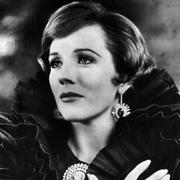
 To A Wild Rose - Julie Andrews
To A Wild Rose - Julie Andrews
